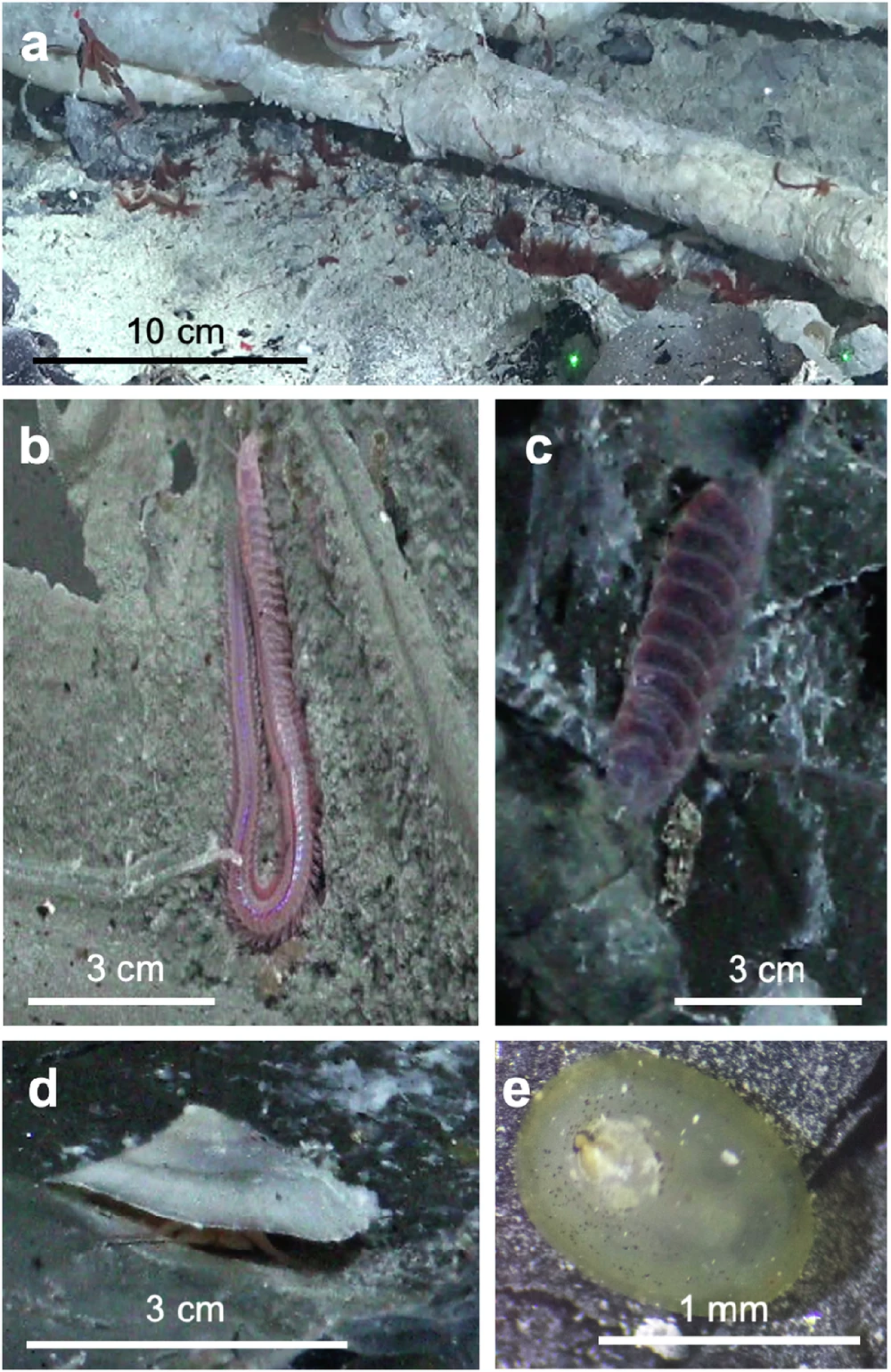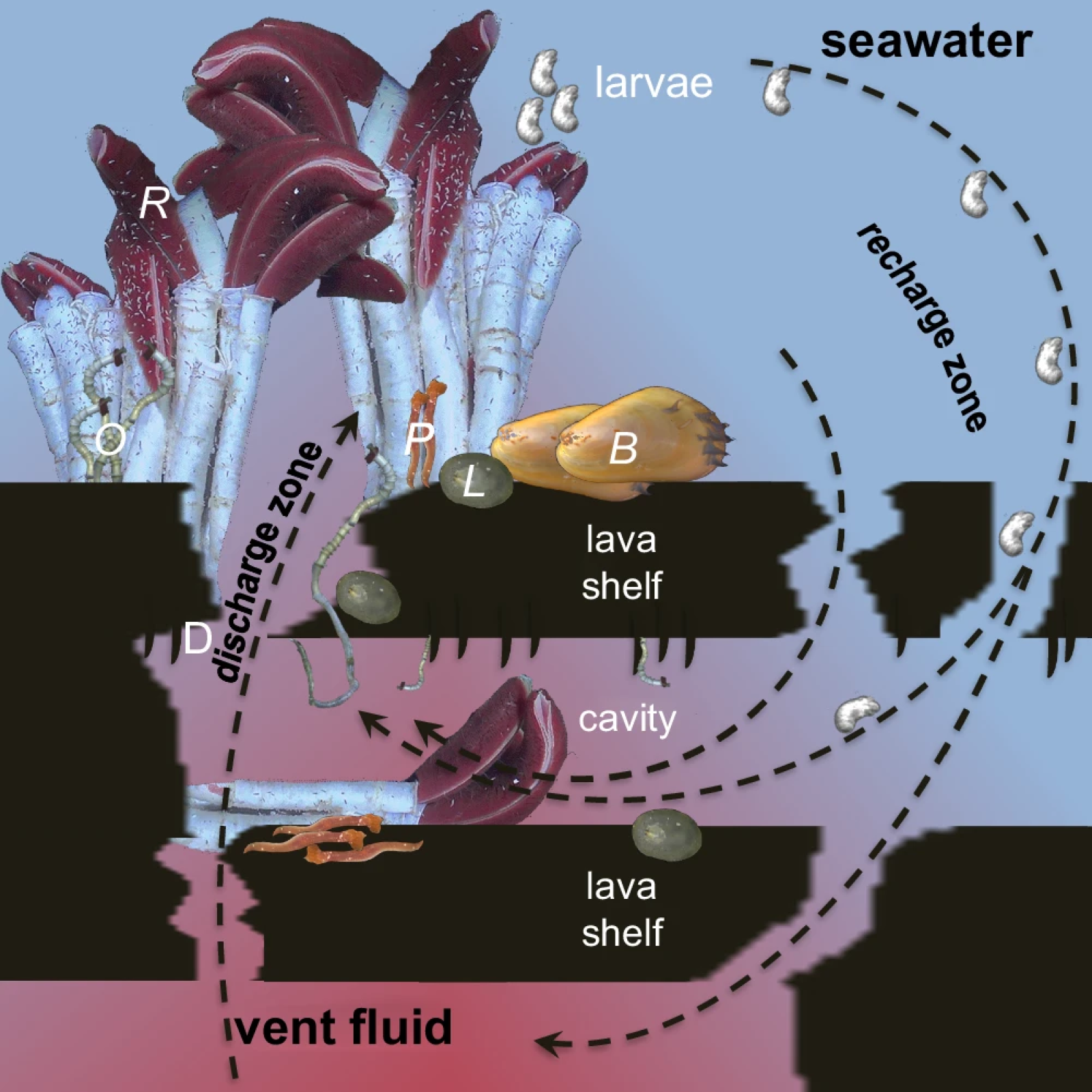Giant animal life in the oceanic crust: an unexpected discovery ! 🌍
Published by Cédric,
Article author: Cédric DEPOND
Source: Nature Communications
Other Languages: FR, DE, ES, PT
Article author: Cédric DEPOND
Source: Nature Communications
Other Languages: FR, DE, ES, PT
Follow us on Google News (click on ☆)
At depths of over 8,200 feet (2,500 meters), scientists have uncovered a universe teeming with animal life beneath the oceanic crust. These are cavities filled with hydrothermal fluids, surrounded by giant worms that can reach lengths of up to 10 feet (3 meters).

a) Several specimens of Paralvinella spp. on Riftia pachyptila tubes and at the bottom of the cavity, green lasers marking a distance of 4 inches (10 cm).
b) Nereis sandersi on the ceiling of the cavity.
c) Branchinotogluma spp. observed during the dive.
d) Neomphalus fretterae semi-sessile observed during the dive.
e) Lepetodrilus spp. on the ceiling of the cavity.
These geological structures, called hydrothermal vents, create conditions favorable for the development of these creatures. This phenomenon, previously observed with microorganisms, had never been documented for larger animals.
Researchers from the Schmidt Ocean Institute, aboard the research vessel Falkor, used submersibles to explore the Pacific seafloor. They discovered a diverse fauna consisting of gastropods, cephalopods, and other mollusks previously unknown at these depths.
Scientists also observed larvae in these cavities, suggesting that young specimens could colonize this environment through the hydrothermal vent fluids. This indicates that these ecosystems may be interconnected with those of the ocean floor.
These discoveries challenge our understanding of underwater dynamics and suggest that vast portions of the oceanic crust could harbor complex life forms. This raises concerns about the protection of these unique ecosystems in the face of mining threats.

Cross-section of a lobate lava flow formed by layers of lava plates with interspersed cavities.
- The cavity ceiling may feature lava drips (D).
- Cracks appear at various locations in the lava plates.
- In the recharge zone, cold seawater penetrates the shallow crust through the cracks and mixes with hot hydrothermal fluids, eventually venting through fissures in the lava plates.
- Tubeworms like Riftia pachyptila (R) and Oasisia alvinae (O) release fertilized eggs, which develop into trochophore larvae in the water column before settling into the subsurface cavity system.
- Mobile animals, such as Paralvinella (P) and Lepetodrilus (L), transit through the circulation system as larvae or migrate through cracks in the lobate lava.
- Some species, like Bathymodiolus thermophilus mussels (B), colonize the vent openings on the surface but have not been observed in the subsurface.
Scale: Lava plate thickness ~4 inches (10 cm), cavities ~2 to ~6 inches (5 to ~15 cm) in height. The cavities can extend across multiple layers of lava.
The extent of this underground habitat, however, remains to be defined. Some scientists suggest that life could extend much further, but conditions grow increasingly extreme as one descends deeper into the crust.